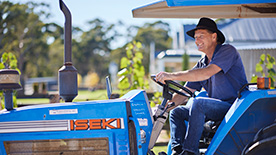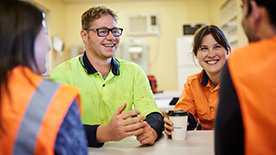Contact us
Typing in the search field displays search suggestions below the search field
Menu
- Home
-
Insurance
Insurance
Insurance
-
Insurance with us
Insurance with us
Insurance with us
- Register for cover Register for cover
- Maintain your cover Maintain your cover
- Certificate of registration (currency) Certificate of registration (currency)
- Premium calculations Premium calculations
- Employer remuneration return Employer remuneration return
- Pay your premium Pay your premium
- Businesses using labour supply Businesses using labour supply
- Claims agent lookup Claims agent lookup
- Your claims agent Your claims agent
- Retro-paid loss arrangement Retro-paid loss arrangement
- Premium audits Premium audits
- Self-insurance Self-insurance
-
Healthy workplaces
Healthy workplaces
Healthy workplaces
- Creating a safer workplace Creating a safer workplace
- Healthy Workplaces Service Healthy Workplaces Service
- Mentally healthy workplaces Mentally healthy workplaces
- Preventing psychological harm Preventing psychological harm
- Employee assistance programs Employee assistance programs
- Injury management self-audit tool Injury management self-audit tool
- Simple steps to safety self-audit tool Simple steps to safety self-audit tool
- Young workers Young workers
-
Employer education and support
Employer education and support
Employer education and support
- Workplace education Workplace education
- Skill building workshops and webinars Skill building workshops and webinars
- Return to Work Coordinators Return to Work Coordinators
- Return to Work Coordinator certification training Return to Work Coordinator certification training
- Tools and resources Tools and resources
-
Insurance with us
Insurance with us
-
Claims
Claims
Claims
-
When an injury occurs
When an injury occurs
When an injury occurs
- Report an injury or make a claim Report an injury or make a claim
- Assessing your injury Assessing your injury
- Determining your claim Determining your claim
- Support and benefits Support and benefits
- My claim app My claim app
- Work fatalities Work fatalities
- Your support team Your support team
- Information for people who work past retirement age Information for people who work past retirement age
-
Returning to work
Returning to work
Returning to work
- Health benefits of work Health benefits of work
- Recovery and return to work plan Recovery and return to work plan
- Suitable duties Suitable duties
- Job placement and support Job placement and support
- ReCONNECT: available at any stage during your claim ReCONNECT: available at any stage during your claim
- Providing suitable employment Providing suitable employment
- ReSkilling ReSkilling
- Worksite assessment Worksite assessment
- Re-employment incentive scheme for employers (RISE) Re-employment incentive scheme for employers (RISE)
- Job dictionaries Job dictionaries
- Worker stories Worker stories
- Recovery Recovery
- Employer and worker obligations Employer and worker obligations
- Silicosis support Silicosis support
- Independent Medical Examinations Independent Medical Examinations
- Noise induced hearing loss and hearing services Noise induced hearing loss and hearing services
- Impairment assessment Impairment assessment
-
When an injury occurs
When an injury occurs
-
Service providers
Service providers
Service providers
-
Medical
Medical
Medical
- Work Capacity Certificate Work Capacity Certificate
- Electronic Work Capacity Certificate (eWCC) Electronic Work Capacity Certificate (eWCC)
- Work Injury Guide for Medical Practitioners Work Injury Guide for Medical Practitioners
- Clinical support services Clinical support services
- Support services for your patient Support services for your patient
- Pain management Pain management
- Tools and resources Tools and resources
- Education and professional development Education and professional development
- Silicosis Silicosis
- Allied health Allied health
- Mental health Mental health
- Return to work services Return to work services
- Assessment services Assessment services
- Registration and payments Registration and payments
-
Medical
Medical
-
About us
About us
About us
-
ReturnToWorkSA
ReturnToWorkSA
ReturnToWorkSA
-
Our service commitments
Our service commitments
Our service commitments
- Recovery and return to work
- Early and timely assistance
- Maintaining relationships
- Recovery and return to work obligations
- Personalised service
- Clarity and transparency
- Help to make a claim
- Effective communication
- Respecting privacy
- Continuous improvement
- Your right to be supported
- Our complaints policy
- Board Board
- Executive leadership Executive leadership
- Training and events Training and events
- Careers Careers
-
Our service commitments
Our service commitments
- Return to Work scheme Return to Work scheme
- Our regulatory role Our regulatory role
- News room News room
-
How can we help you?
How can we help you?
How can we help you?
- Contact us Contact us
- Request a call back Request a call back
- Contact your claims agent Contact your claims agent
- Useful contacts Useful contacts
- Access information Access information
- Apply for review of a decision Apply for review of a decision
- Complaints Complaints
- Public interest disclosure Public interest disclosure
- Contact us Contact us
-
ReturnToWorkSA
ReturnToWorkSA
- Online services
- Contact us
Language
Online Services
Login


- Home
- Insurance
- Healthy workplaces
- Simple steps to safety self-audit tool
Date published: 23 Sep 2019
ReturnToWorkSA
400 King William Street, Adelaide SA 5000
GPO Box 2668, Adelaide SA 5001
P: 13 18 55 | E: info@rtwsa.com | W: www.rtwsa.com
 Date printed: 29 Apr 2025
Date printed: 29 Apr 2025





